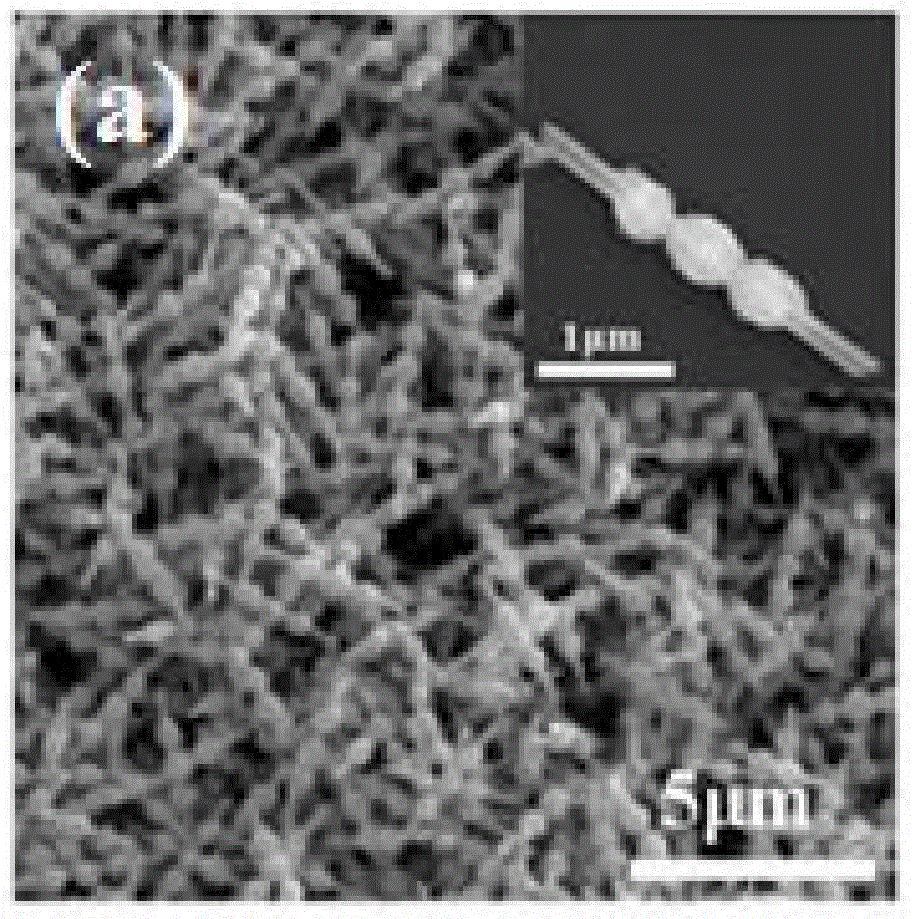Gourd string structure cadmium sulfide-tellurium heterojunction photoelectrolysis composite material, preparation method and use
A composite material, cadmium sulfide technology, applied in the direction of cadmium sulfide, nanotechnology for materials and surface science, element selenium/tellurium, etc. Suitable for mass production and other problems
- Summary
- Abstract
- Description
- Claims
- Application Information
AI Technical Summary
Problems solved by technology
Method used
Image
Examples
Embodiment 1
[0045] S1: To an appropriate amount of organic solvent ethylene glycol, add tellurium diethyldithiocarbamate (TDEC) and cadmium diethyldithiocarbamate (CED) at a mass ratio of 5:3, and use a magnetic stirrer Fully stir and mix evenly to obtain the precursor reaction solution;
[0046] S2: The precursor reaction solution is subjected to a two-stage microwave heating constant temperature reaction to obtain a cadmium sulfide-tellurium heterojunction photocatalytic composite material, specifically:
[0047] S2-1: Under the microwave power of 200W, heat the precursor reaction solution obtained in step S1 from room temperature to 90° C., and keep at this temperature for 5 minutes to obtain the first reaction solution;
[0048] S2-2: Continue heating the first reaction solution to 160° C. under a microwave power of 500 W, and keep at this temperature for 5 minutes to obtain a second reaction solution;
[0049] S2-3: naturally cool the second reaction solution to room temperature, an...
Embodiment 2-3
[0050] Embodiment 2-3: the investigation of raw material consumption ratio
[0051] Except that tellurium diethyldithiocarbamate (TDEC) and cadmium diethyldithiocarbamate (CED) of different mass ratios shown in Table 1 below are used in step S1, other operations are all the same as in Example 1, Thereby carrying out embodiment 2-3, used raw material dosage ratio and composite material nomenclature are shown in table 1 below.
[0052] Table 1. Composite materials prepared under different raw material dosage ratios
[0053]
Embodiment 4-9
[0054] Embodiment 4-9: Investigation of microwave power
PUM
| Property | Measurement | Unit |
|---|---|---|
| band gap | aaaaa | aaaaa |
| width | aaaaa | aaaaa |
| width | aaaaa | aaaaa |
Abstract
Description
Claims
Application Information
 Login to View More
Login to View More - R&D
- Intellectual Property
- Life Sciences
- Materials
- Tech Scout
- Unparalleled Data Quality
- Higher Quality Content
- 60% Fewer Hallucinations
Browse by: Latest US Patents, China's latest patents, Technical Efficacy Thesaurus, Application Domain, Technology Topic, Popular Technical Reports.
© 2025 PatSnap. All rights reserved.Legal|Privacy policy|Modern Slavery Act Transparency Statement|Sitemap|About US| Contact US: help@patsnap.com



